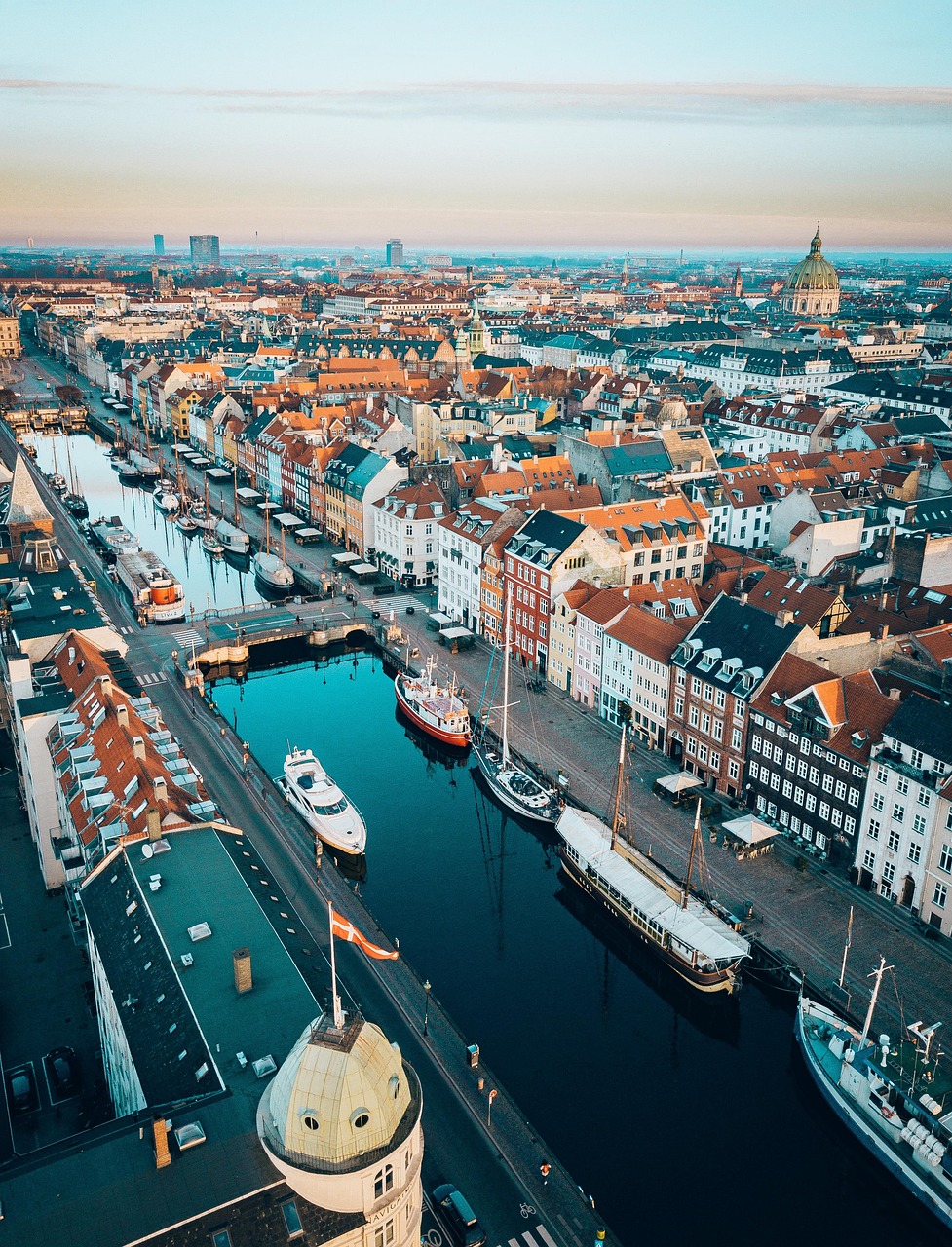Top 15 Sustainable Travel Destinations Worldwide
Sustainable travel insights and guidance
Sustainable travel destinations are those that prioritize environmental protection, support local communities, and offer authentic experiences while minimizing negative impacts. These destinations prove that tourism can be a force for conservation and community development.
🌍 What Makes a Destination Sustainable?
Sustainable destinations are characterized by strong environmental protection policies, community involvement in tourism development, conservation of natural and cultural heritage, and economic benefits that support local communities while maintaining the integrity of the destination.
 Costa Rica
Costa Rica1. Costa Rica
Central America
Costa Rica has been a pioneer in sustainable tourism, with over 25% of its land protected in national parks and reserves. The country generates over 98% of its electricity from renewable sources and aims to be carbon neutral by 2050.
🌿 Sustainability Highlights:
- 25% of land protected in national parks and reserves
- 98% renewable energy generation
- Carbon neutrality goal by 2050
- Strong community-based tourism programs
- Comprehensive environmental education
- Wildlife conservation and research programs
📅 Best Time to Visit:
Dry season (December to April) for optimal weather, or green season (May to November) for lush landscapes and fewer crowds. Many eco-lodges offer special rates during the green season.
Must-See: Manuel Antonio National Park, Monteverde Cloud Forest, Tortuguero National Park, and Arenal Volcano. Experience world-class eco-lodges, wildlife viewing, and adventure activities while supporting conservation efforts.
2. Bhutan
Himalayas, Asia
Bhutan is the world's only carbon-negative country, with over 70% of its land covered in forests. The country has implemented a unique tourism model that prioritizes quality over quantity and supports local communities.
🌿 Sustainability Highlights:
- World's only carbon-negative country
- 70% forest coverage with strict protection
- High-value, low-impact tourism model
- Strong cultural preservation programs
- Community-based tourism initiatives
- Comprehensive environmental policies
📅 Best Time to Visit:
March to May and September to November for optimal weather and clear mountain views. Avoid monsoon season (June to August) for trekking.
Must-See: Tiger's Nest Monastery, Paro Valley, Thimphu, and Punakha. Experience authentic Bhutanese culture, stunning Himalayan landscapes, and spiritual retreats while supporting local communities.
3. Iceland
North Atlantic
Iceland has achieved 100% renewable energy generation and has implemented strict environmental protection policies. The country balances tourism growth with environmental conservation through innovative management strategies.
🌿 Sustainability Highlights:
- 100% renewable energy generation
- Strict environmental protection policies
- Innovative tourism management
- Geothermal energy utilization
- Wildlife conservation programs
- Community-based tourism development
📅 Best Time to Visit:
June to August for midnight sun and optimal weather, or September to March for Northern Lights viewing. Each season offers unique experiences.
Must-See: Blue Lagoon, Golden Circle, Jökulsárlón Glacier Lagoon, and Northern Lights. Experience geothermal wonders, glacial landscapes, and unique wildlife while supporting renewable energy initiatives.
4. New Zealand
South Pacific
New Zealand has implemented comprehensive environmental protection policies and has been a leader in sustainable tourism development. The country balances tourism growth with conservation through innovative management strategies.
🌿 Sustainability Highlights:
- Comprehensive environmental protection
- Innovative tourism management
- Strong conservation programs
- Community-based tourism initiatives
- Wildlife protection and research
- Sustainable agriculture practices
📅 Best Time to Visit:
December to February for summer activities, or March to May and September to November for mild weather and fewer crowds. Each season offers unique experiences.
Must-See: Fiordland National Park, Abel Tasman National Park, Rotorua, and Queenstown. Experience pristine wilderness, adventure activities, and Maori culture while supporting conservation efforts.
 Norway
Norway5. Norway
Scandinavia
Norway has achieved 98% renewable energy generation and has implemented strict environmental protection policies. The country balances tourism growth with environmental conservation through innovative management strategies.
🌿 Sustainability Highlights:
- 98% renewable energy generation
- Strict environmental protection policies
- Innovative tourism management
- Wildlife conservation programs
- Community-based tourism initiatives
- Sustainable transportation systems
📅 Best Time to Visit:
June to August for midnight sun and optimal weather, or September to March for Northern Lights viewing. Each season offers unique experiences.
Must-See: Lofoten Islands, Geirangerfjord, Bergen, and Northern Lights. Experience stunning fjords, Arctic landscapes, and unique wildlife while supporting renewable energy initiatives.
6. Slovenia
Central Europe
Slovenia has implemented comprehensive environmental protection policies and has been a leader in sustainable tourism development. The country balances tourism growth with conservation through innovative management strategies.
🌿 Sustainability Highlights:
- Comprehensive environmental protection
- Innovative tourism management
- Strong conservation programs
- Community-based tourism initiatives
- Wildlife protection and research
- Sustainable agriculture practices
📅 Best Time to Visit:
May to September for optimal weather and outdoor activities, or October to April for winter sports and fewer crowds. Each season offers unique experiences.
Must-See: Lake Bled, Triglav National Park, Ljubljana, and Postojna Cave. Experience pristine wilderness, adventure activities, and cultural heritage while supporting conservation efforts.
7. Palau
Micronesia
Palau has implemented the world's first marine sanctuary covering 80% of its waters and has been a leader in sustainable tourism development. The country balances tourism growth with marine conservation through innovative management strategies.
🌿 Sustainability Highlights:
- World's first marine sanctuary (80% of waters)
- Innovative marine conservation
- Strong community-based tourism
- Wildlife protection and research
- Sustainable fishing practices
- Environmental education programs
📅 Best Time to Visit:
November to April for optimal weather and diving conditions, or May to October for fewer crowds and lower prices. Each season offers unique experiences.
Must-See: Rock Islands, Jellyfish Lake, Blue Corner, and Ngardmau Waterfall. Experience pristine marine ecosystems, world-class diving, and unique wildlife while supporting marine conservation efforts.
8. Rwanda
East Africa
Rwanda has implemented comprehensive environmental protection policies and has been a leader in sustainable tourism development. The country balances tourism growth with conservation through innovative management strategies.
🌿 Sustainability Highlights:
- Comprehensive environmental protection
- Innovative tourism management
- Strong conservation programs
- Community-based tourism initiatives
- Wildlife protection and research
- Sustainable agriculture practices
📅 Best Time to Visit:
June to September and December to February for optimal weather and wildlife viewing, or March to May and October to November for fewer crowds. Each season offers unique experiences.
Must-See: Volcanoes National Park, Akagera National Park, Nyungwe Forest, and Kigali. Experience mountain gorillas, diverse wildlife, and cultural heritage while supporting conservation efforts.
9. Galápagos Islands
Ecuador
The Galápagos Islands have implemented strict environmental protection policies and have been a leader in sustainable tourism development. The archipelago balances tourism growth with conservation through innovative management strategies.
🌿 Sustainability Highlights:
- Strict environmental protection
- Innovative tourism management
- Strong conservation programs
- Community-based tourism initiatives
- Wildlife protection and research
- Sustainable fishing practices
📅 Best Time to Visit:
June to December for optimal weather and wildlife viewing, or January to May for warmer waters and marine life. Each season offers unique experiences.
Must-See: Charles Darwin Research Station, Tortuga Bay, Bartolomé Island, and Isabela Island. Experience unique wildlife, pristine ecosystems, and scientific research while supporting conservation efforts.
10. Patagonia
Chile & Argentina
Patagonia has implemented comprehensive environmental protection policies and has been a leader in sustainable tourism development. The region balances tourism growth with conservation through innovative management strategies.
🌿 Sustainability Highlights:
- Comprehensive environmental protection
- Innovative tourism management
- Strong conservation programs
- Community-based tourism initiatives
- Wildlife protection and research
- Sustainable agriculture practices
📅 Best Time to Visit:
November to March for optimal weather and outdoor activities, or April to October for winter sports and fewer crowds. Each season offers unique experiences.
Must-See: Torres del Paine National Park, Perito Moreno Glacier, Ushuaia, and El Calafate. Experience pristine wilderness, adventure activities, and unique wildlife while supporting conservation efforts.
11. Madagascar
Indian Ocean
Madagascar has implemented comprehensive environmental protection policies and has been a leader in sustainable tourism development. The island balances tourism growth with conservation through innovative management strategies.
🌿 Sustainability Highlights:
- Comprehensive environmental protection
- Innovative tourism management
- Strong conservation programs
- Community-based tourism initiatives
- Wildlife protection and research
- Sustainable agriculture practices
📅 Best Time to Visit:
April to October for optimal weather and wildlife viewing, or November to March for fewer crowds and lower prices. Each season offers unique experiences.
Must-See: Andasibe-Mantadia National Park, Isalo National Park, Nosy Be, and Antananarivo. Experience unique wildlife, pristine ecosystems, and cultural heritage while supporting conservation efforts.
12. Borneo
Southeast Asia
Borneo has implemented comprehensive environmental protection policies and has been a leader in sustainable tourism development. The island balances tourism growth with conservation through innovative management strategies.
🌿 Sustainability Highlights:
- Comprehensive environmental protection
- Innovative tourism management
- Strong conservation programs
- Community-based tourism initiatives
- Wildlife protection and research
- Sustainable agriculture practices
📅 Best Time to Visit:
March to October for optimal weather and wildlife viewing, or November to February for fewer crowds and lower prices. Each season offers unique experiences.
Must-See: Kinabalu National Park, Sepilok Orangutan Rehabilitation Centre, Danum Valley, and Kota Kinabalu. Experience unique wildlife, pristine rainforests, and cultural heritage while supporting conservation efforts.
13. Azores
Portugal
The Azores have implemented comprehensive environmental protection policies and have been a leader in sustainable tourism development. The archipelago balances tourism growth with conservation through innovative management strategies.
🌿 Sustainability Highlights:
- Comprehensive environmental protection
- Innovative tourism management
- Strong conservation programs
- Community-based tourism initiatives
- Wildlife protection and research
- Sustainable agriculture practices
📅 Best Time to Visit:
May to October for optimal weather and outdoor activities, or November to April for fewer crowds and lower prices. Each season offers unique experiences.
Must-See: São Miguel Island, Pico Island, Faial Island, and Terceira Island. Experience pristine wilderness, adventure activities, and unique wildlife while supporting conservation efforts.
 Copenhagen Denmark
Copenhagen Denmark14. Faroe Islands
Denmark
The Faroe Islands have implemented comprehensive environmental protection policies and have been a leader in sustainable tourism development. The archipelago balances tourism growth with conservation through innovative management strategies.
🌿 Sustainability Highlights:
- Comprehensive environmental protection
- Innovative tourism management
- Strong conservation programs
- Community-based tourism initiatives
- Wildlife protection and research
- Sustainable agriculture practices
📅 Best Time to Visit:
June to August for optimal weather and outdoor activities, or September to May for fewer crowds and Northern Lights viewing. Each season offers unique experiences.
Must-See: Tórshavn, Gásadalur, Mykines, and Saksun. Experience pristine wilderness, adventure activities, and unique wildlife while supporting conservation efforts.
15. Svalbard
Norway
Svalbard has implemented comprehensive environmental protection policies and has been a leader in sustainable tourism development. The archipelago balances tourism growth with conservation through innovative management strategies.
🌿 Sustainability Highlights:
- Comprehensive environmental protection
- Innovative tourism management
- Strong conservation programs
- Community-based tourism initiatives
- Wildlife protection and research
- Sustainable agriculture practices
📅 Best Time to Visit:
June to August for optimal weather and wildlife viewing, or September to May for Northern Lights viewing and winter activities. Each season offers unique experiences.
Must-See: Longyearbyen, Pyramiden, Barentsburg, and Nordkapp. Experience Arctic wilderness, unique wildlife, and polar adventures while supporting conservation efforts.
🌍 Planning Your Sustainable Travel Adventure
When choosing a sustainable travel destination, consider the following factors:
- Environmental Protection: Look for destinations with strong conservation programs and environmental policies
- Community Benefits: Choose destinations that support local communities and provide economic benefits
- Cultural Preservation: Look for destinations that protect and celebrate local culture and heritage
- Wildlife Conservation: Choose destinations that prioritize wildlife protection and research
Best Time to Visit: Research the optimal season for your chosen destination, considering weather, wildlife viewing opportunities, and crowd levels. Many sustainable destinations offer special rates during off-peak seasons.
What to Pack: Lightweight, breathable clothing; reusable water bottle; eco-friendly toiletries; and a willingness to learn about local conservation efforts. Most sustainable destinations provide filtered water and discourage single-use plastics.
Getting There: Consider the environmental impact of your transportation choices. Look for destinations that are accessible by train or bus, or choose airlines with strong sustainability programs.